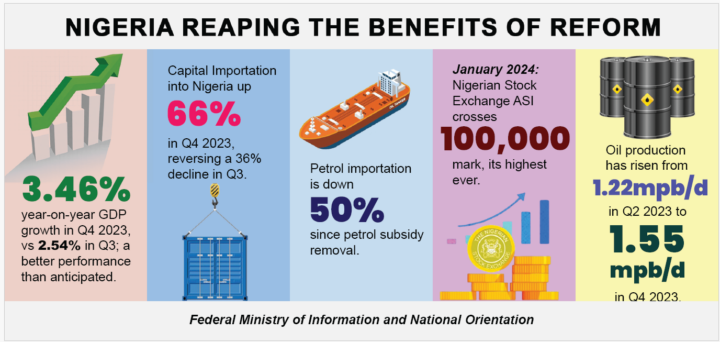The last time farmlands existed in Aiyetoro was in 2019 before a sea surge swept through the community. These farms were small plots of land on which a variety of cash crops were cultivated mainly for consumption because large-scale farming in the community had been made unsuitable by previous incursions. But some of the farmers persisted, repeatedly exploring diverse ways to protect their farms from the sea.
One of the farmers was Rasaki Fumilayo, a septuagenarian who lived in a small brick house a few steps away from the seashore. She only cultivated crops expected to survive the high tide and had reduced her farming in scale as the years passed to check the losses she was likely to incur. She farmed with mounds, raising her plants above sea level, which provided refuge for the crops until 2019. Before the flooding which left the community in ruins.
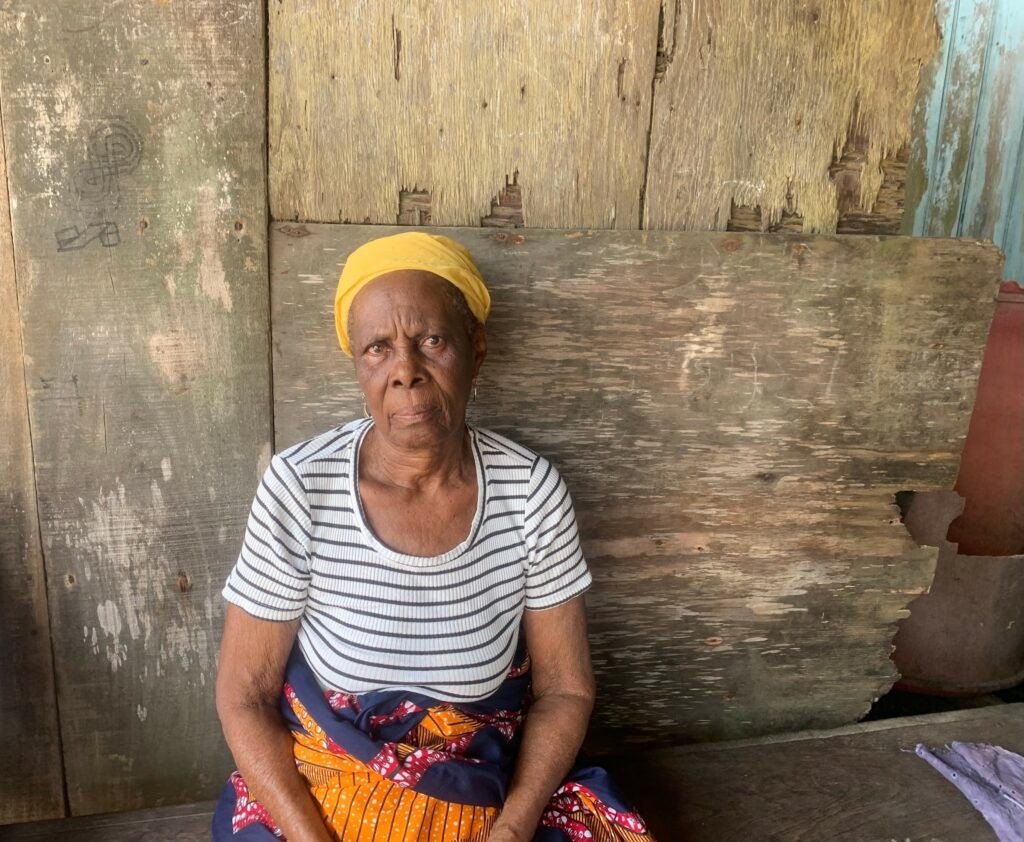
“It became unsustainable. I couldn’t continue. I had tried all the possible solutions to ensure that my farm survived, but the flooding that year was worse than anything we had seen, so I had no choice but to give it up,” she said.
In Ondo, communities along the Atlantic coast, such as Aiyetoro, have endured years of sea incursions caused by rising sea levels and intense storms, both effects of climate change. The impact ranges from displacements to continuous disruption of lives and properties.
The incursion has been a recurring crisis for over a decade, but it worsened in 2019, and the villagers began to adopt safer options. For Funmilayo, it was switching to fish trade.
Recurring Sea Incursion
The villagers residing in Ondo coastline are predominantly fishers, as most of them are engaged in catching, aquaculture or fish trade.
But due to the recurring sea flooding, even more villagers are shifting towards the practice, as the surge persists, destroying their belongings and businesses.
“But even those already established in fishing have been struggling since the sea surge worsened and have to find ways to ensure the safety of their business,” said Fehintola Alebiosu, a 34-year-old fisherman in Aiyetoro who lost his fishing boat to the surge in 2022.
This was at a time when the ocean surge had grown even more frequent than it used to be. That day, as he explained, he had left his fishing equipment by the shore alongside many others as they usually do, when the incursion came with heavy tides and submerged numerous boats.
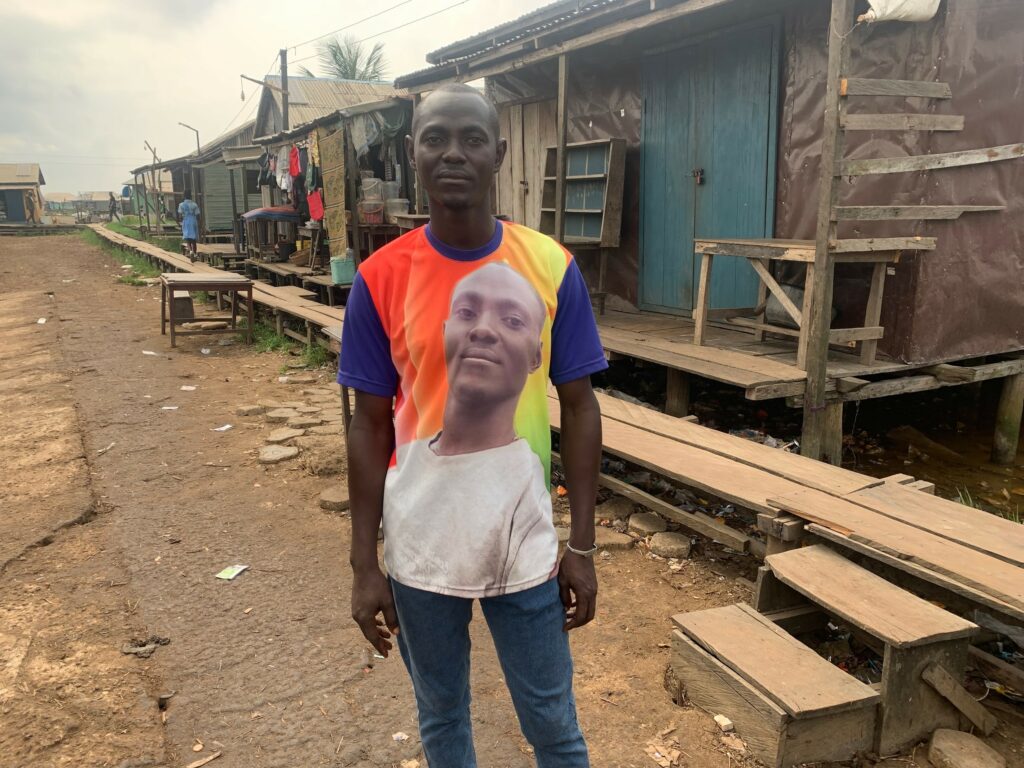
Alebiosu described the flooding as the worst incident for him. “It dealt a devastating blow,” he admitted, “Sure, we have flooding every year, but that one stripped me of my equipment.”
Many fishing equipments have been destroyed by the surge on numerous occasions. Now, most fishermen work together on the sea. Those whose fishing tools have been destroyed by the incursion often peer with the locals who still own equipment. A few others began to create ponds to culture fishes.
Alebiosu works with Busayo Johnson, a middle-aged fisherman in his community who still has all his finishing tools and together they brave through the crisis
Villagers Use Moon As A Guide
It is now a common belief among the fishermen in Aiyetoro that a sea flood is likely to occur a day after the appearance of a full moon, and a scarcity of seafood will follow. At the sight of a full moon, the locals begin to prepare for an incursion. Boats and canoes are moved from the lowland to higher ground, fishing gear and other tools are kept safe, fishing activities are halted temporarily, and the villagers must stay indoors to ensure the safety of their belongings.
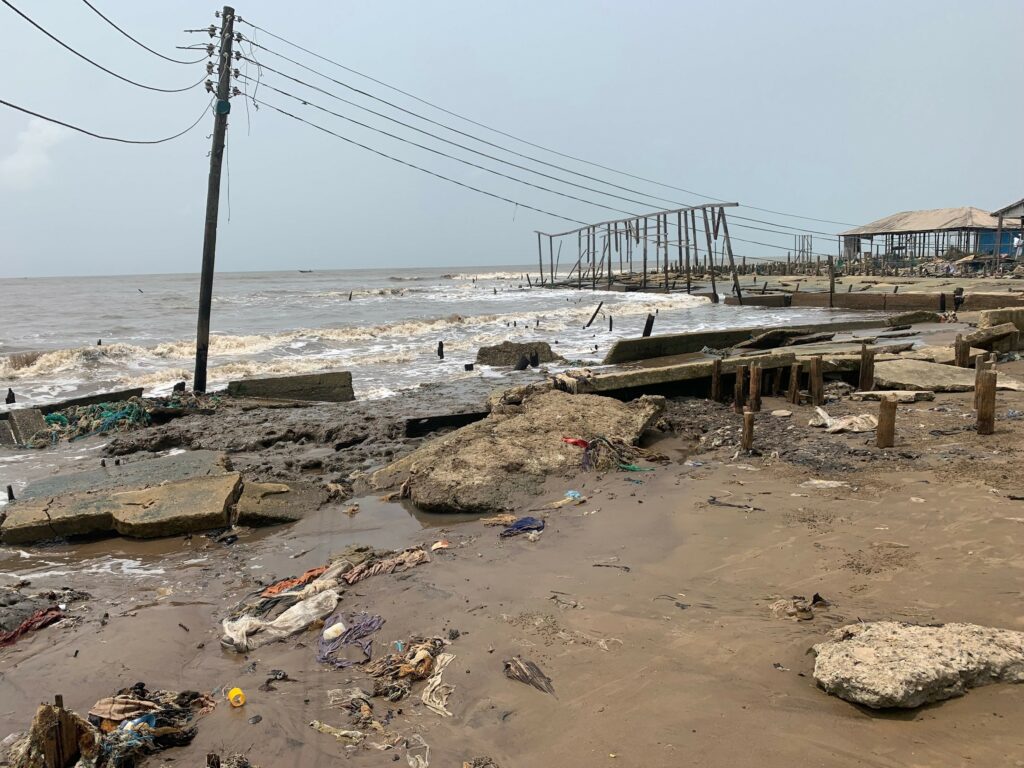
“If you are not well prepared, the water could destroy your work tools, properties and even your house,” Busayo Johnson pointed out.
The villagers are relying on an age-old tradition of observing the moon’s phases to anticipate changes in the sea tide and potential flooding.
According to a report by the National Oceanic and Atmospheric Administration (NOAA), the average tidal range of an ocean is larger, causing sea levels to rise more than usual.
The report noted that “the moon appears full, the gravitational pull of the sun is ‘added’ to the gravitational pull of the moon on earth, causing the oceans to bulge a bit more than usual.” Research has also shown that local geography, like low-lying areas such as found in Ondo coastlines, influences the severity of the surge.
How Goat Breeding Empowers Women in Hadeja: Lessons for Other Jigawa Councils
But there are times when the sea level rises without the full moon. In these cases, the villagers observe the sea waves and torrents and monitor the flow of the water into the community.
Johnson said, “The sea encroaches without the moon, sometimes. And we just observe the sea level and wave. But there are days when none of this is applicable, and one is hardly prepared for the flood.”
The Hunt For Sea-Food
Often, in the aftermath of a sea incursion, there’s a decline in the seafood available in the sea. This, according to the fishers, stifles the business.
But they are undeterred, and instead, venture deeper into the sea, many kilometres away from the coast, in search of food. These trips are often made solo, but sometimes, the fishermen work as a group, relying on shared information about the state of the sea.
“After a surge, we must move far away from the shore, that’s the only option because there’s nothing around the coast,” said Kola Ayeni, a fisherman residing in Abekere, another coastal community in Ondo.
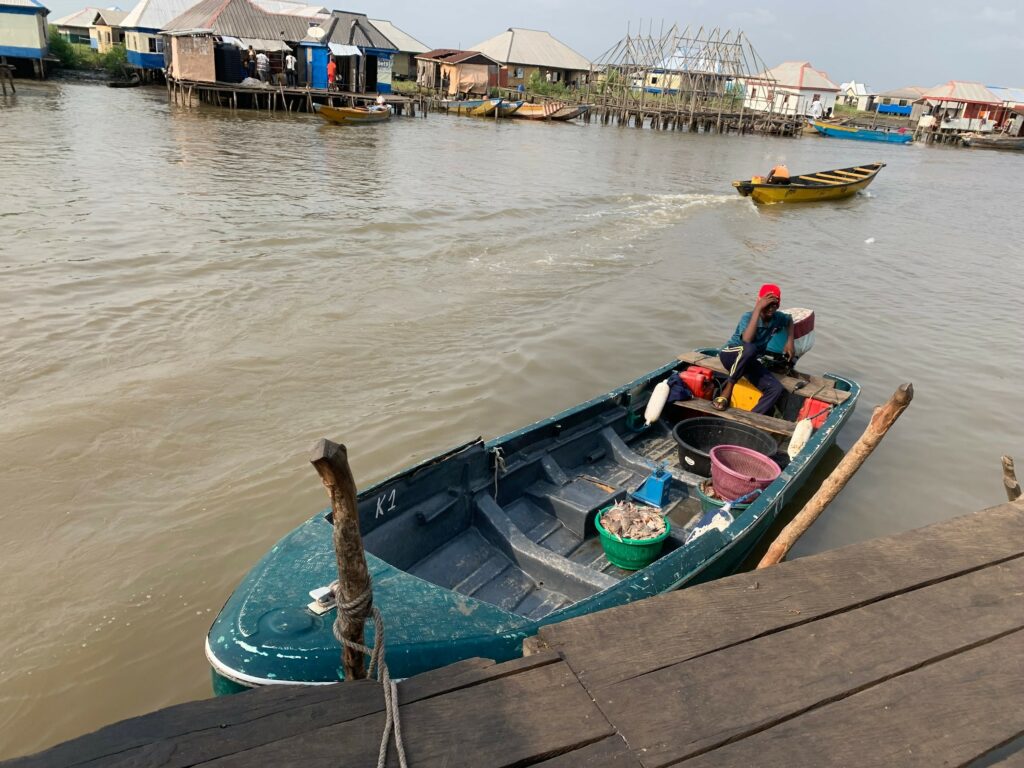
Ebenezer Atibere, another fisherman, explained, “We spend hours on the boat, venturing deep into the sea. The farther we go, the better our chances of a good catch, ensuring we have enough fish to sell.”
But as rewarding as this effort can be, Atibere said it is often a risk, from which fishermen are likely to incur more losses because these trips are sometimes fruitless.
“We can ride as far as we want and still find nothing, and this happens very often. Fueling the fishing boats for this trip cost N150,000, and when we return with nothing this is our loss,” he explained.
To address these issues, Professor Musa Tanko, a meteorologist and climate analyst, suggested that the fishers can use the daily marine forecast provided by the Nigerian Meteorological Agency (NiMET), to get a more accurate prediction of the tides and state of the large water body.
According to Tanko, who works as a meteorologist with NiMET, the agency has models that provide forecasts about sea tides, which would be useful to the coastal communities.
He also suggested that the fishing communities demand a partnership with NiMET to ensure that the agency provides them with information relating to the sea.
He said the marine forecast provided by the NiMET would serve as a daily guide, regulating the activity of the fishermen on the sea and the communities as a whole.
Fish Farmers Try To Cut Losses
Fish farmers are also faced with adversity, often the loss of fish in flooded ponds. The ponds used by the farmers are mainly natural ponds and, in many cases, are destroyed or emptied by sea-flood.
According to the fish farmer, as the surge recedes, it sweeps the fish from the ponds back to the sea, and the heavier the surge, the higher the loss incurred.
To protect his ponds, Ayanfe Alabi, a 50-year-old fish farmer in Aiyetoro, uses nets as protective gear to keep the fish at bay during a sea flood.
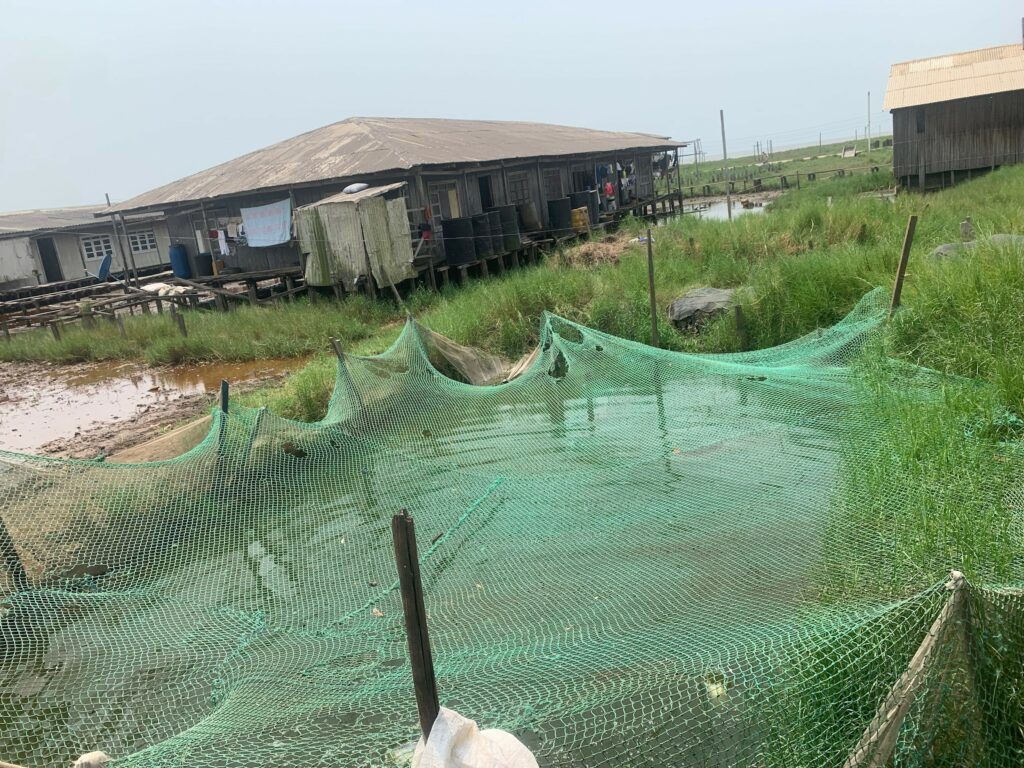
The net is spread across the surface of the ponds and held up by sticks planted in the pond that help keep the net firm for a long period and protect against the wind.
But its effect is limited. Fish farmers in the community said this measure is only effective when the surge is not so intense. Otherwise, the net would not be a strong barrier.
However, Dr Daniel Diyaolu, a fishery and aquaculture researcher, suggested the creation of ponds during seasons when heavy sea incursions are less likely to occur.
The researcher works at Olusegun Agagu University of Science and Technology, Okitipupa, Ondo state (OAUSTECH), said, “It is best that they don’t stock the ponds when the tides are likely to be high, and the flooding more intense, especially during the rainy season.
“This is a form of citizen science, as the residents of these areas have fundamental knowledge of the terrain better than those simply studying it. so they will be able to identify when the flooding is likely to come. And they don’t stock during this period. Or make the harvest time fall ahead of the incursion.”
He also noted that “they also need to use strong nets that can protect the fishes from any external encroachment, not just the sea, but also other animals because once that exists, the sea is likely to get easier access.
Experts Call For Diversification
Dr Diyaolu also suggested that the villagers focus more on aquaculture instead of relying on catching fish from the wild. He said fishing communities can consider growing fish that are likely to survive close to the shore despite the rising tides.
According to him, this attempt could also be aided by scientific research, making it easier to identify the species of fish likely to survive close to the coastline.
“If there is a way, the seawater can be used to culture fishes instead of running after the fishes in the sea. They can use the water closer to the coast to groom species of fish that can survive there.
INVESTIGATION: Untold Story of Maltreatment, Human Rights Violations at Dangote Refinery
Untold Story of Almajiri Schools Left For Ruins In Bauchi
“ They should focus on identifying fishes that can survive close to the coast and raising them. Those species would always be available to them irrespective of the tide.”
Similarly, Ikuesan Bamijoko, an aquaculturist who also works at OAUTECH, suggested that the fishing community diversify and practise other forms of agriculture in neighbouring communities not prone to flooding.
“Residents of communities prone to flooding can visit other communities that are not threatened by the sea surge and practice other means of agriculture. They can move westwards to nearby communities and pursue palm oil production, poultry, fish farming on a larger scale, and other cash crops.
Bamijoko also emphasised the need for the government to protect the shoreline using rocks as developed countries did to mitigate sea incursion in coastal areas.
Government Reacts
Efforts to speak with the director of fishery of the Ondo state Ministry of Agriculture, Iyabo Olaleye, was unsuccessful, as she was absent both times this reporter visited the Ministry of Agriculture. She also did not respond to phone calls or the text sent to her phone as at the time of filing this report.
But, the Director of Agriculture Extension, Ondo State Agriculture Development Project (OSADP), Amuwa Williams, when contacted, advised that villagers interested in farming can use mobile planting containers, such as plastic bags, to allow them to quickly and easily move their crops to safety in the event of an incursion.
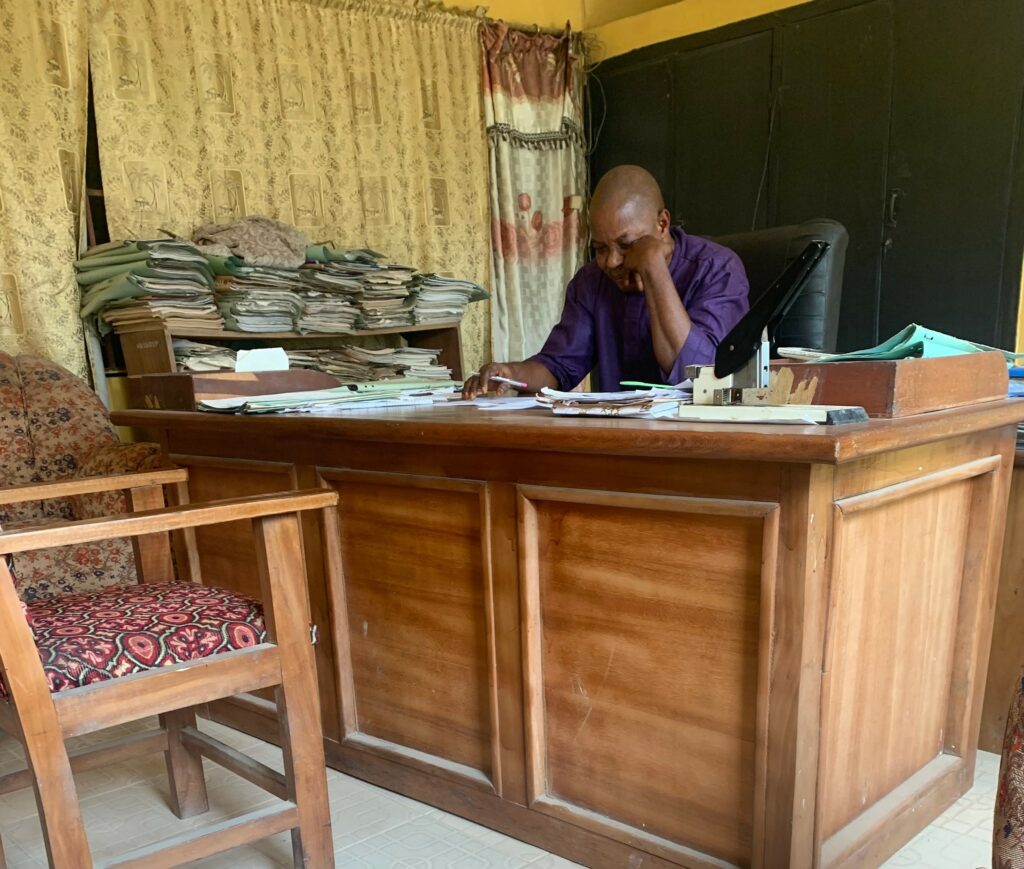
He observed that this type of farming is suitable for the cultivation of vegetables and would allow the villagers to protect their farms effectively from the surge.
However, he noted that the government response to the crisis has been insufficient and a lack of funds has hindered significant intervention by the agency.
He emphasised the need for government intervention to resolve the crisis and protect residents of affected communities.
“The devastation in that area is monumental, and the intervention of the state and federal government intervention is mandatory. Probably using ecological funds. I believe the embarkment of the coastline would significantly curb the sea incursion in affected communities. Dredging of the sea could also reduce the incursion of the sea into residential areas,” he said.
According to Desmond Majekodunmi, a climate change activist, those in positions of authority need to wake up to the responsibilities attached to their position, else the communities on the coastline will be wiped out into extinction.
He pointed out that the sea surge, caused by climate change resulting from global warming, would only worsen, devastating coastal communities further.
“In the past, the sea surge was seasonal, but because of global warming which is causing climate change, we are now having an unprecedented sea surge, that is flooding low-lying coastal areas in Nigeria. The sea surge in Ondo is likely to get increasingly worse, and this is a big problem.”
Majekodunmi noted that while these communities continue to make local efforts to ensure their survival, government intervention is essential to guarantee protection.
This report was sponsored by the Centre for Journalism Innovation and Development, with funding support from the Public Diplomacy Section of the U.S. Embassy, Abuja.

